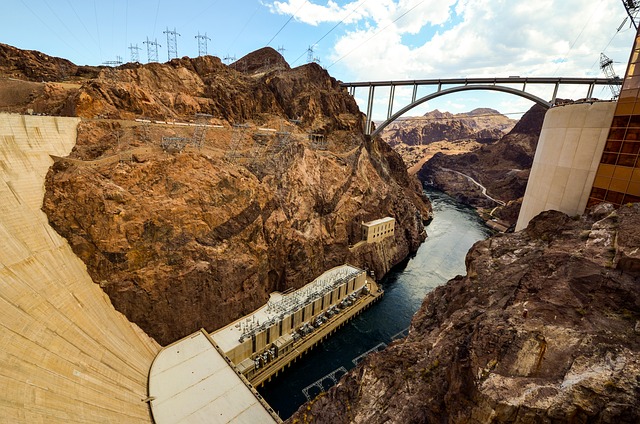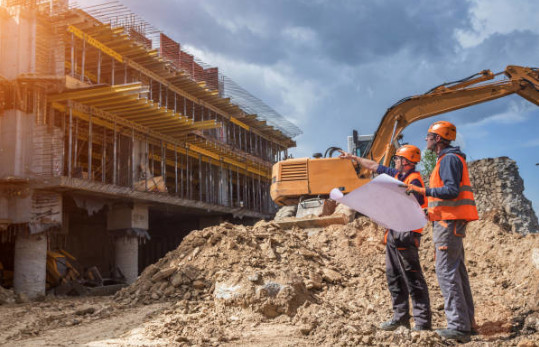Specialized Geotechnical Works for Lasting Building And Construction Solutions
Specialized Geotechnical Works for Lasting Building And Construction Solutions
Blog Article
Just How Consulting Engineers Enhance Geotechnical Design Projects: Insights Into Their Know-how, Techniques, and Collaborative Approaches
Consulting designers are essential in boosting geotechnical engineering jobs, applying their specialized expertise to browse the complexities of subsurface problems. Their approaches incorporate an array of website investigation methods, consisting of Criterion Penetration Tests (SPT) and Cone Infiltration Tests (CPT), which notify important choices during the layout and building and construction phases. Furthermore, their joint approaches foster communication amongst diverse task stakeholders, inevitably shaping the task's trajectory. As we take a look at the complex functions these professionals play, it ends up being clear that their payments extend past technological competence, motivating a closer check out the effects for project success.
Role of Consulting Engineers
The knowledge of getting in touch with designers in geotechnical design is essential to the effective execution of building tasks. These specialists play a critical function in assessing soil and rock buildings, which are important variables affecting layout and construction decisions. By performing extensive website investigations, getting in touch with engineers accumulate vital data that notifies the design procedure, guaranteeing projects are built on stable and suitable ground.
Consulting engineers also provide very useful understandings into threat monitoring (geotechnical geologist). They identify prospective geotechnical dangers, such as landslides, soil liquefaction, and negotiation issues, enabling stakeholders to implement effective mitigation methods. Their proficiency help in maximizing foundation designs, which can cause substantial expense savings and enhanced security
Furthermore, consulting designers work as a crucial web link between job owners, engineers, and specialists. Their capability to translate complex geotechnical information right into workable suggestions cultivates partnership and facilitates educated decision-making throughout the project lifecycle. This multidisciplinary strategy not just improves job efficiency yet also makes certain conformity with regulatory standards and finest practices.
Key Methods in Geotechnical Design

One main method is site examination, which involves conducting field examinations and lab evaluations to collect data on subsurface problems. Techniques such as Standard Infiltration Screening (SPT) and Cone Infiltration Screening (CPT) are extensively made use of to examine dirt stratigraphy and stamina. Furthermore, geophysical methods, consisting of seismic and electric resistivity studies, give non-invasive ways to evaluate subsurface characteristics.
One more important methodology is numerical modeling, which allows designers to simulate different scenarios and forecast how soil-structure communications will certainly behave under different loading problems. Limited Component Analysis (FEA) is a common technique used in this context.
In addition, the style of structures, retaining structures, and earthworks depends greatly on these approaches - geotechnical geologist. By integrating innovative analytical tools with area data, getting in touch with engineers can create customized services that address specific job challenges, inevitably adding to the security and security of building and construction projects
Value of Soil Analysis
Dirt analysis acts as a foundational aspect in geotechnical design, providing essential insights into the physical and chemical residential or commercial properties of dirt required for efficient building planning. Comprehending dirt qualities is vital for identifying its load-bearing capacity, drain behavior, and potential for negotiation or instability. Detailed dirt investigations, consisting of sampling and lab testing, aid determine criteria such as soil type, dampness content, thickness, and shear strength.
These analyses notify the choice of ideal building strategies and materials, inevitably affecting job safety and durability. Cohesive soils may require different structure styles compared to granular dirts, requiring over here customized design services. Soil analysis aids in identifying pollutants that can posture threats to human wellness or the environment, allowing for find out this here the growth of mitigation methods.
Including dirt evaluation into the early stages of job advancement helps to minimize unanticipated challenges, ensuring that engineers can prepare for and address potential concerns prior to they escalate. By developing a comprehensive understanding of the website problems, getting in touch with designers can optimize design performance and lower prices, consequently improving the general success of geotechnical design tasks.
Joint Strategies in Jobs
Effective geotechnical projects typically depend upon joint strategies that unite diverse knowledge from numerous self-controls. Reliable collaboration among consulting engineers, rock hounds, ecological researchers, and construction experts is important for attending to complicated challenges and maximizing task outcomes. By leveraging the unique abilities and understanding of each staff member, jobs can profit from an alternative understanding of the website problems, regulative needs, and design constraints.
Normal communication and interdisciplinary meetings facilitate the sharing of insights and foster a society of synergy. These collective efforts enable the recognition of potential threats early in the task lifecycle, permitting prompt reduction techniques. Incorporating comments from stakeholders, consisting of local communities and governing companies, guarantees that all viewpoints are thought about, improving project acceptance and compliance.
Furthermore, the assimilation of sophisticated technologies, such as Geographic Info Systems (GIS) and Structure Details Modeling (BIM), further boosts partnership. These tools permit the real-time sharing of data and visualization of geotechnical problems, advertising informed look at this now decision-making. Inevitably, a collective approach not only improves project execution but also lays the foundation for innovative remedies to intricate geotechnical design obstacles.
Effect On Project Outcomes

Consulting engineers utilize innovative approaches such as threat assessment and predictive modeling, which improve the precision of job forecasts. Their capacity to incorporate ingenious innovations, like geotechnical instrumentation and information analytics, additionally improves the design and building processes. Therefore, jobs experience improved effectiveness, reduced costs, and minimized delays.
In addition, fostering effective interaction and collaboration among staff member improves analytic capabilities. When challenges arise, a united front permits speedy identification of remedies, preventing prospective problems. Ultimately, the collaborative efforts of seeking advice from designers add to higher high quality outcomes, making certain that projects fulfill both governing requirements and client assumptions.
Final Thought

Report this page